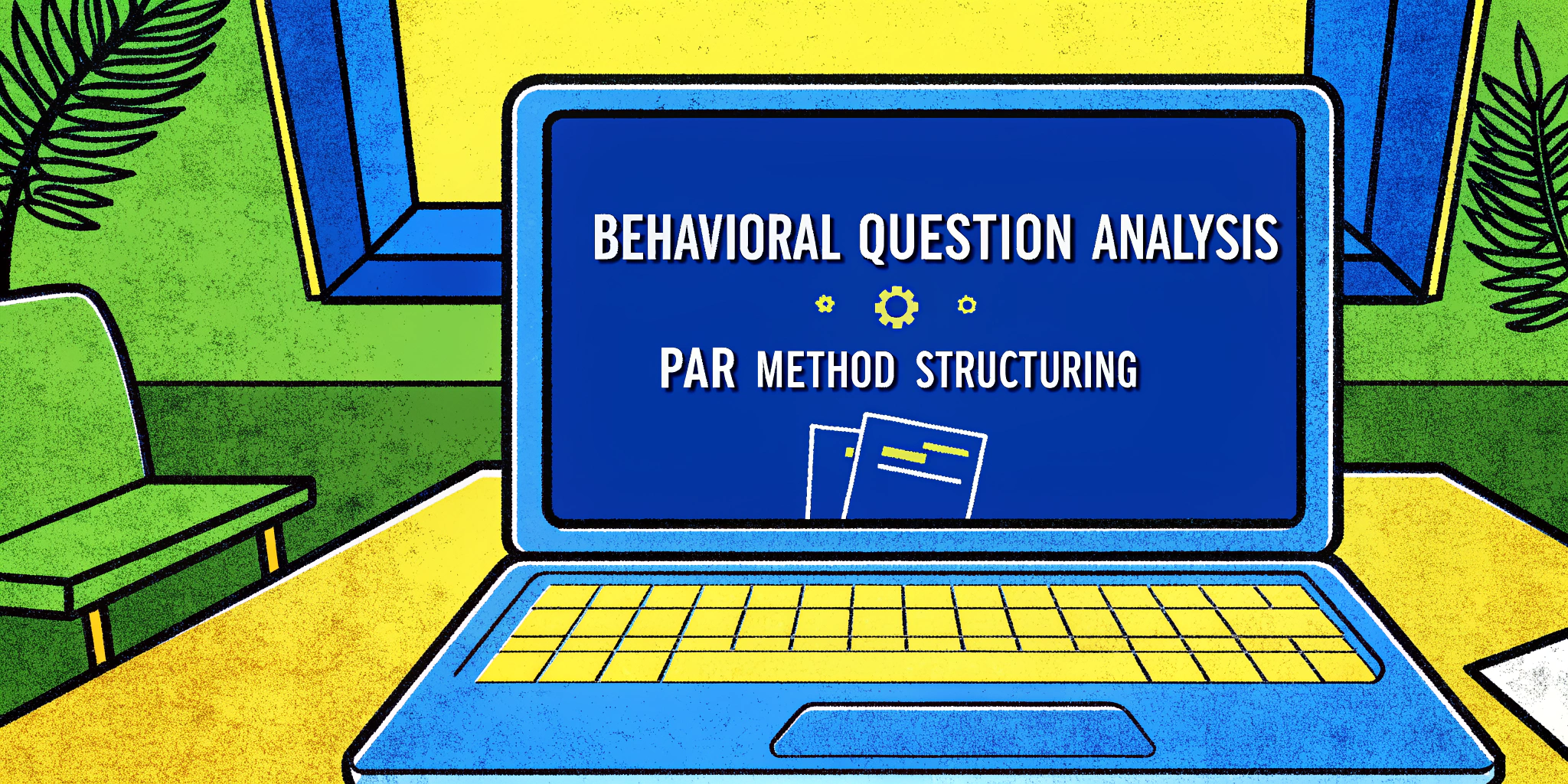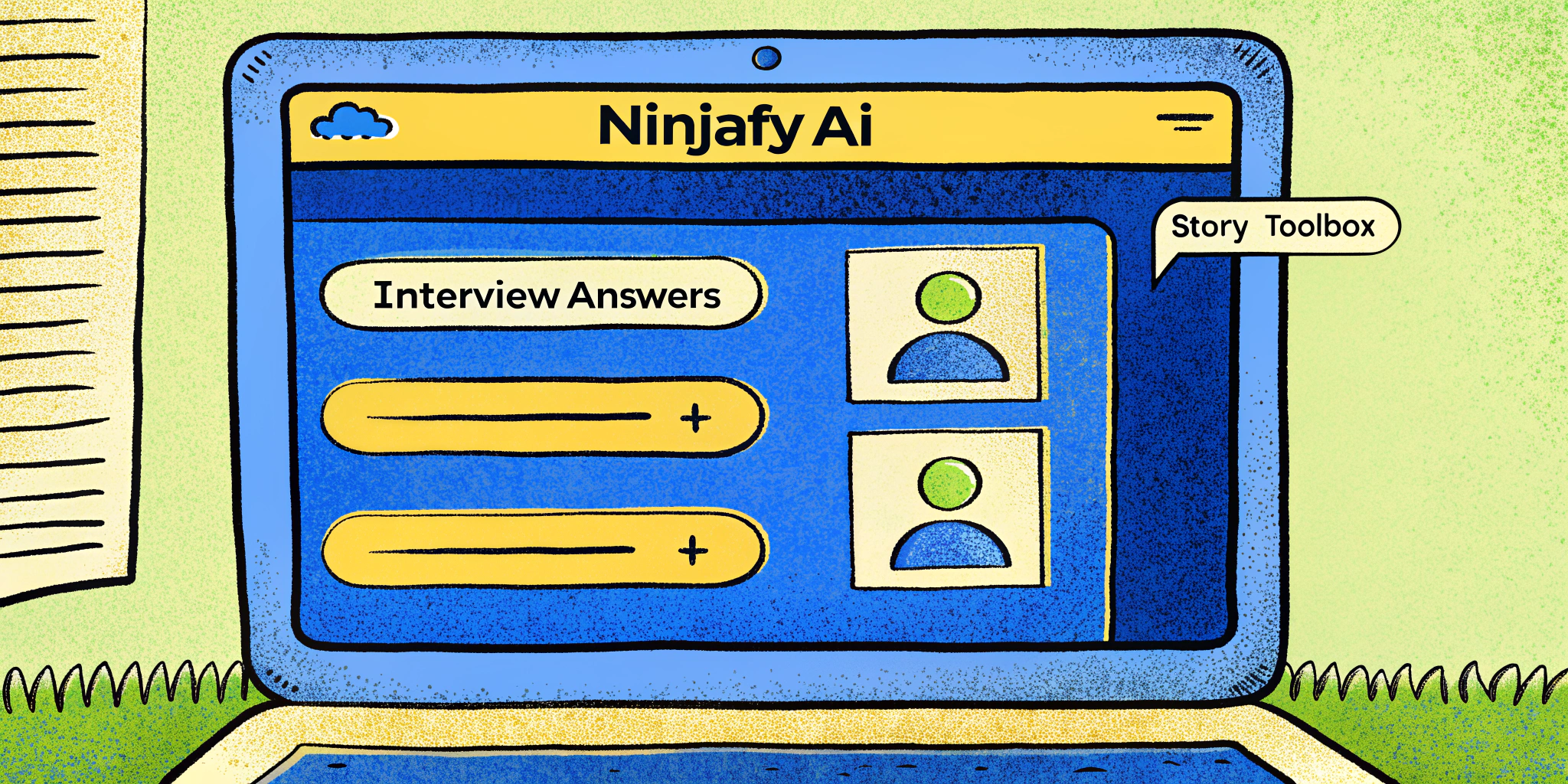Looking to ace your next machine learning interview? Behavioral questions got you sweating? Fret not! Hi, I’m Jason Carter, a seasoned Data Scientist and a self-proclaimed interview strategist. In this guide, I’ll walk you through a step-by-step process to tackle behavioral interview questions like a pro using a Machine Learning Interview Copilot. By the end, you’ll know how to craft memorable stories and leverage tools like Ninjafy AI to give you the ultimate edge.
Table of Contents
- What Are Behavioral Questions?
- Step 1: Build Your Story Toolbox
- Step 2: Understand the PAR Framework
- Step 3: Tailoring Stories to Questions
- Step 4: Use Ninjafy AI for Mock Interviews
- Step 5: Note-Taking and Staying Organized
- Step 6: Practice Real-Time Interview Scenarios
- Step 7: Handle Curveball Questions
- Step 8: Nail Your STAR Moments
- Step 9: Maintain Composure with AI Assistance
- Step 10: Post-Interview Follow-Up
What Are Behavioral Questions?
Behavioral interview questions often start with, “Tell me about a time when…” These questions aim to uncover how you’ve handled real-world challenges, offering the interviewer a glimpse into your problem-solving, interpersonal, and decision-making skills. Unlike technical questions, there’s no binary right or wrong answer—just how effectively you narrate your experiences.
Behavioral questions can feel ambiguous. But here’s the kicker: they’re predictable. By preparing stories in advance, you can answer almost any question seamlessly.
Step 1: Build Your Story Toolbox
To prepare for behavioral interviews, start by creating a “Story Toolbox.” This is a document where you jot down specific, impactful career moments—your professional highlights reel. Here’s what to include:
| Story Type | Example |
|---|---|
| Solving a tough problem | Delivered a machine learning pipeline under tight deadlines. |
| Working with difficult stakeholders | Collaborated with a non-technical team to deploy AI models successfully. |
| Learning from failure | A failed model deployment that taught you the importance of QA processes. |
| Taking initiative | Improved a data ingestion pipeline, saving 20% on processing time. |
Pro Tip: Aim for at least 10 stories. Use prompts like:
- A time you exceeded expectations.
- A time you handled conflicting priorities.
- A time you made a significant impact.
“The more stories you prepare, the less likely you’ll freeze up during the interview.”
Step 2: Understand the PAR Framework
The PAR (Problem, Action, Result) method is your storytelling blueprint. Think of it as the simplified cousin of the STAR method (Situation, Task, Action, Result).
- Problem: What challenge were you facing?
- Action: What steps did you take to resolve it?
- Result: What measurable impact did your actions have?
For example:
Question: “Tell me about a time you worked with a difficult team member.”
Answer (PAR Method):
- Problem: A colleague consistently missed deadlines for critical ML reports.
- Action: I empathized with their workload and proposed a streamlined task-tracking system.
- Result: Deadlines were met 95% of the time, improving project delivery by 30%.
Step 3: Tailoring Stories to Questions
Here’s the secret sauce: Your stories are versatile. The same story can answer multiple questions with a slight tweak in emphasis. Let’s take the example above:
| Question | How to Tweak the Story |
|---|---|
| “How do you handle stress?” | Emphasize managing the high stakes of delayed reports without panicking. |
| “How do you resolve conflicts?” | Focus on the interpersonal approach you used to address the issue. |
| “Tell me about a leadership moment.” | Highlight how you took initiative to implement a system-wide solution. |
Step 4: Use Ninjafy AI for Mock Interviews
Tools like Ninjafy AI take your interview prep to the next level. This AI interview copilot offers live feedback, tailored answers based on your resume, and even industry-specific insights. Here’s how it works:
- Conduct mock interviews with Ninjafy’s Personal Model trained on your unique career journey.
- Get real-time feedback on your PAR structure and storytelling.
- Use its InvisibleEyetrack™ to maintain steady, confident eye contact during video interviews.
Step 5: Note-Taking and Staying Organized
Before every interview, review your Story Toolbox. For virtual interviews, keep a printout or digital copy handy. For in-person interviews, read through your notes just before entering the room.
| Interview Type | Preparation Tip |
|---|---|
| Virtual | Keep a clean, cheat-sheet-like Story Toolbox open. |
| In-Person | Carry a notebook with bullet points to glance through. |
“Organization not only helps you stay calm—it shows the interviewer you’re prepared.”
Step 6: Practice Real-Time Interview Scenarios
Behavioral questions can sometimes catch you off guard. Tools like Ninjafy AI are invaluable for simulating real-time scenarios. Their NinjaCopilot™ feature provides live suggestions, ensuring you’re never at a loss for words—even for curveball questions.
Step 7: Handle Curveball Questions
Even with preparation, interviewers might throw unexpected questions your way. Stay calm, think back to your Story Toolbox, and adapt. For instance:
Curveball: “Tell me about a time you managed a budget.”
Adaptation: Pivot to a story about managing resources (e.g., optimizing cloud spend for ML model training).
Step 8: Nail Your STAR Moments
While PAR is concise, STAR (Situation, Task, Action, Result) can help with more complex questions. Use STAR for multi-layered problems:
Example:
- Situation: A client needed a recommendation system for their e-commerce site.
- Task: Deploy a scalable ML model within 6 weeks.
- Action: Built a collaborative filtering model, conducted A/B testing, and fine-tuned hyperparameters.
- Result: Increased sales by 15%.
Step 9: Maintain Composure with AI Assistance
Interviews can be nerve-wracking, but AI tools like Ninjafy’s InvisibleEyetrack™ keep you calm. Its undetectable assistance ensures you maintain eye contact, avoiding the “shifty eyes” syndrome common in virtual interviews.
Step 10: Post-Interview Follow-Up
Always follow up with a thank-you email. If unsure how to phrase it, Ninjafy AI’s email template generator has you covered. Keep it professional yet warm, reiterating your enthusiasm for the role.
Conclusion: Crack Behavioral Interviews with Confidence
Mastering behavioral interviews doesn’t have to feel like climbing Everest. By building your Story Toolbox, mastering frameworks like PAR, and leveraging AI tools such as Ninjafy AI, you can approach your next machine learning interview with unparalleled confidence. Remember, preparation is the key to success—and with the right tools, you’re already halfway there!




